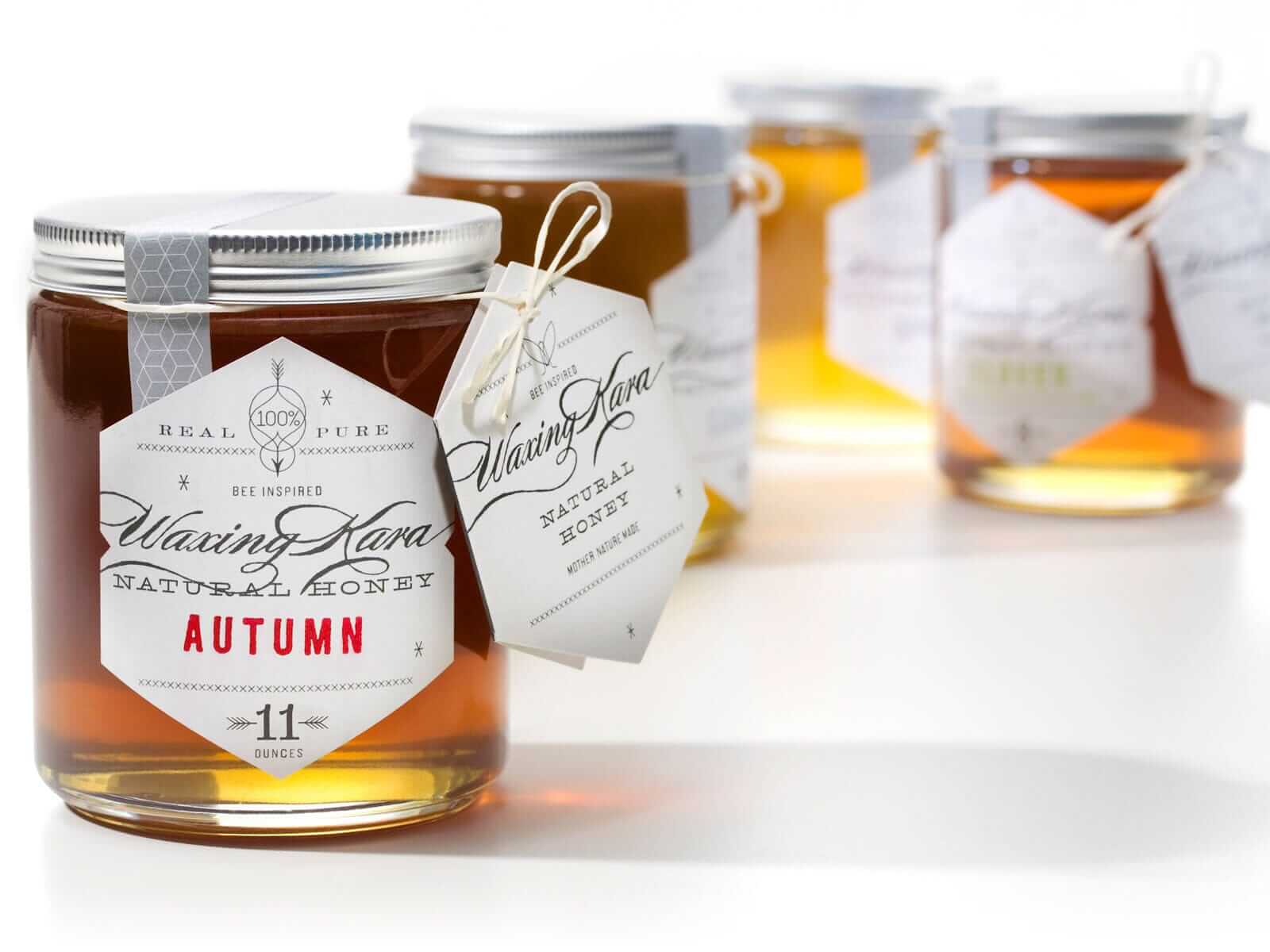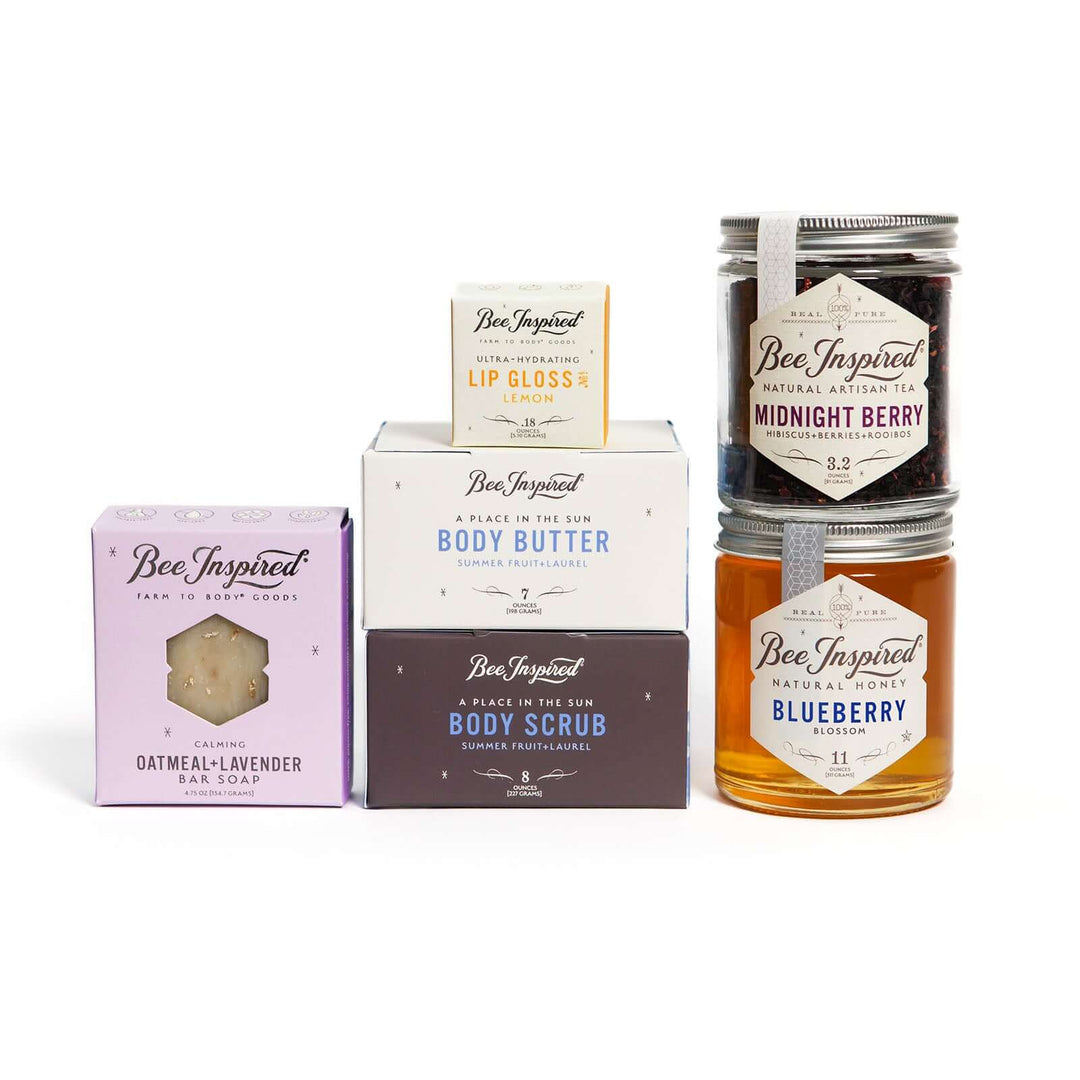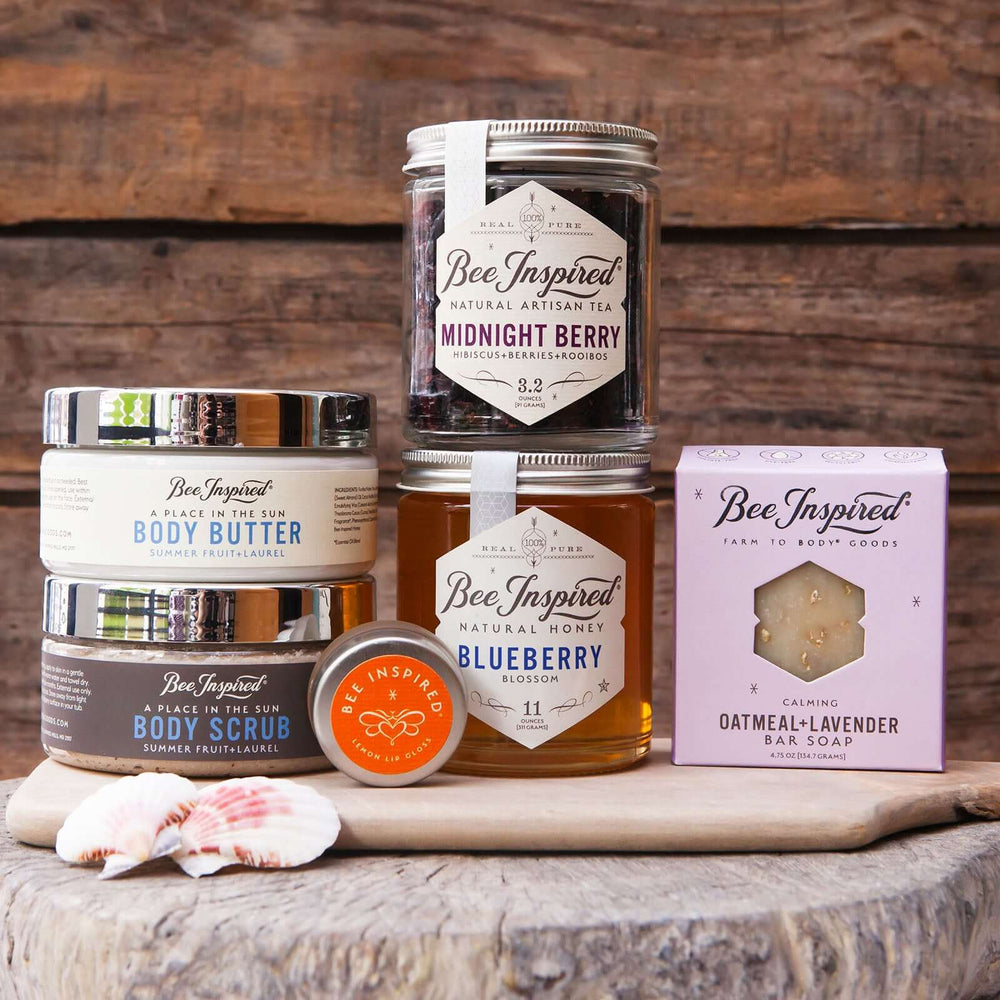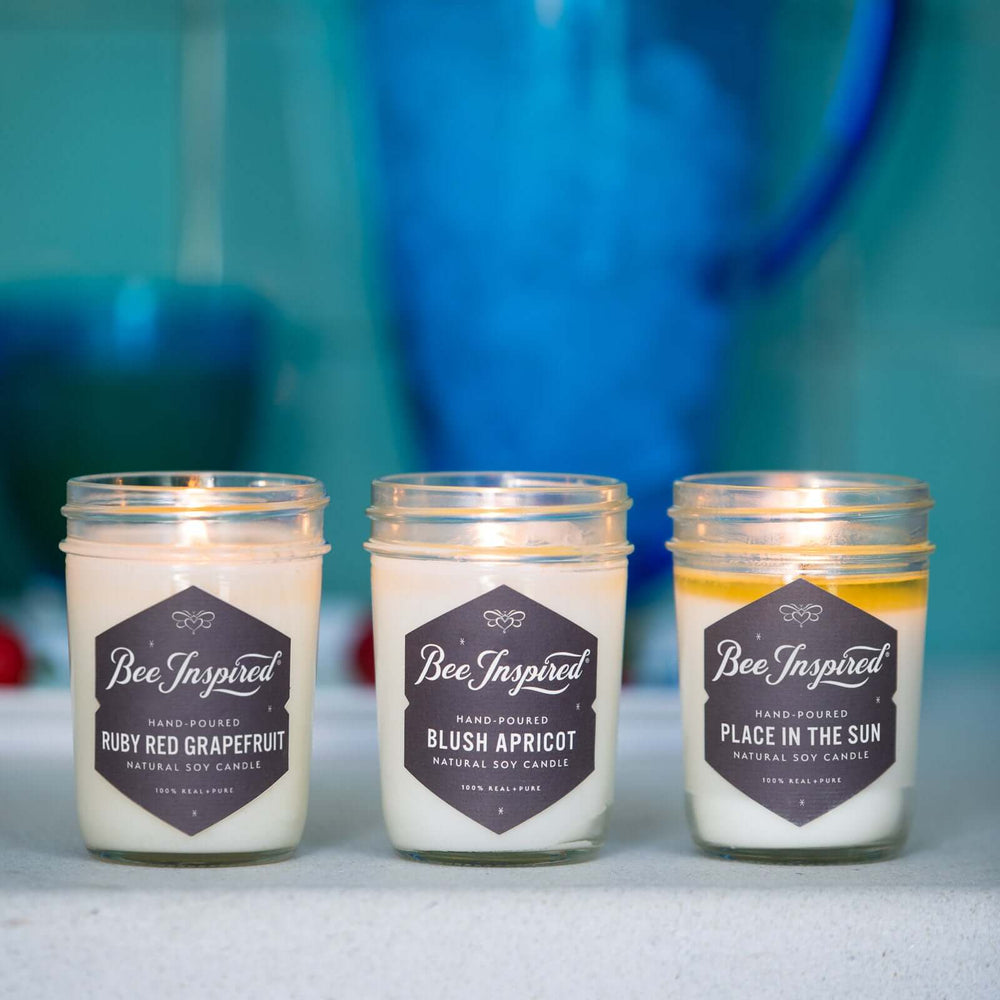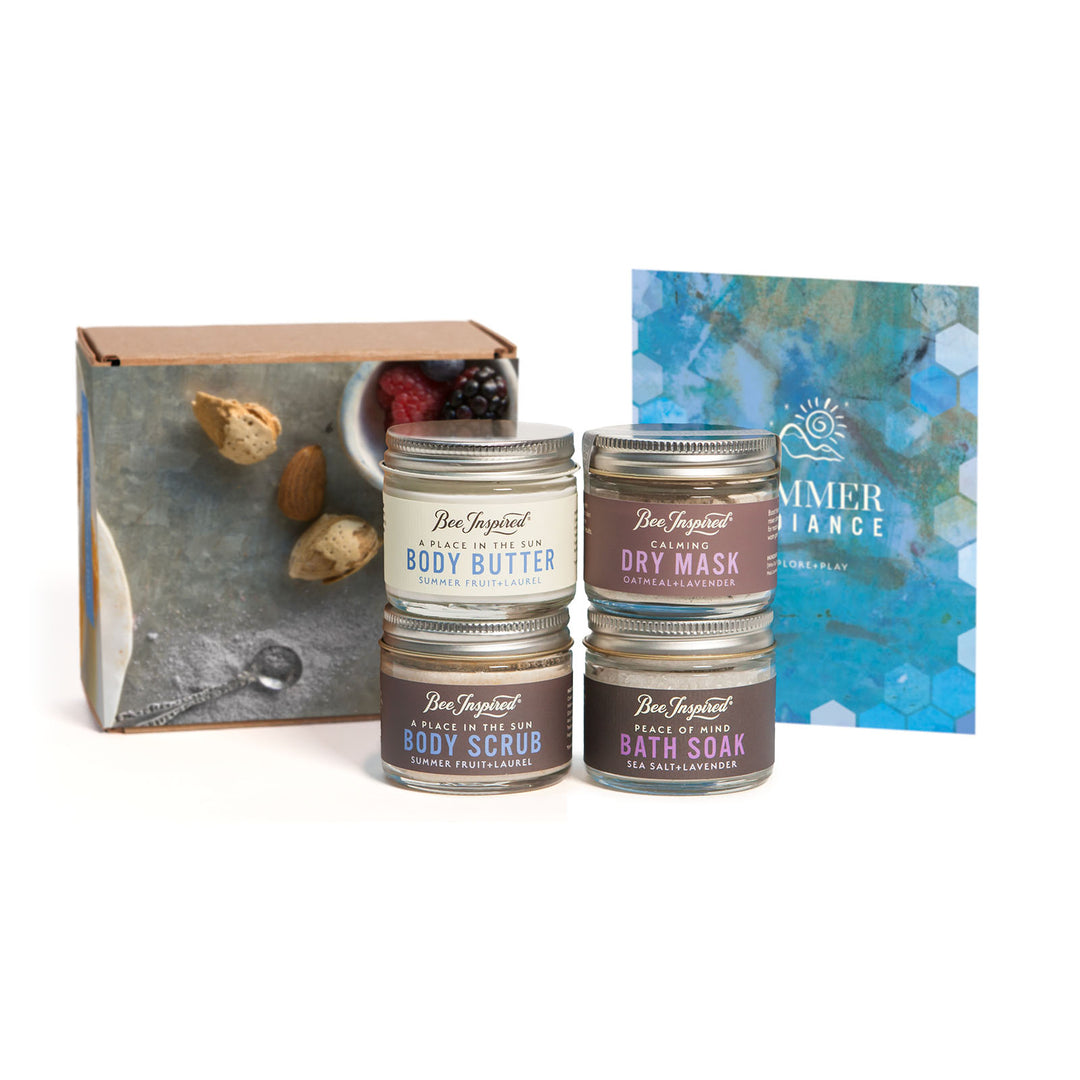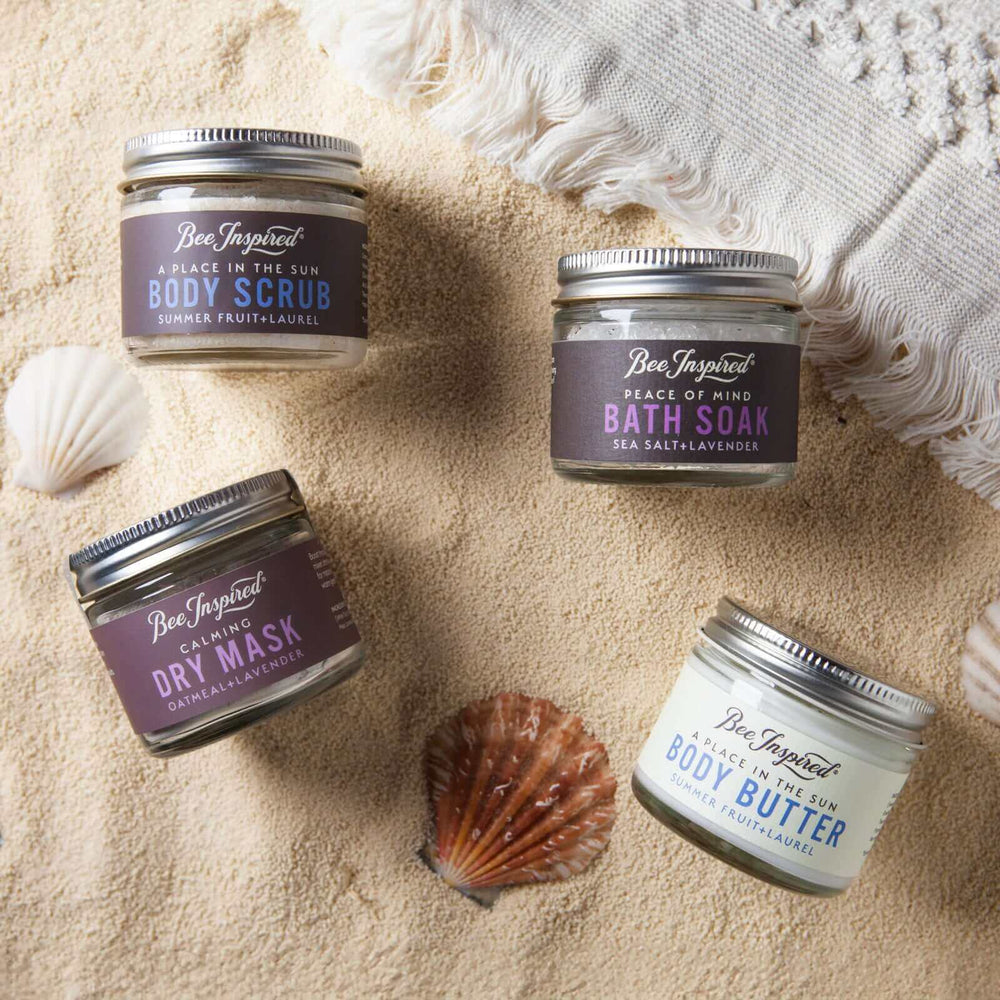Honey Packaging can be a sticky proposition. There's all that honey waiting to be bottled and sold. Besides the need for safe and sanitary conditions and a process similar to canning, there is the issue of how fast honey can be packaged and distributed. Then, there's a whole world of honey packaging options awaiting the honey producer's focused attention.
I found this out a while back as I set about to create my honey packaging for the honey I cultivated from my beekeeping efforts.
Here's my story and a few helpful how-to's for present or prospective makers and sellers of honey-based products. Key takeaways are: Be original, Make it look good, make it stand out, make it high-quality and professional, make it the first (or certainly among the first) product(s) that consumers are attracted to on shelves or online sites. As a former graphic designer and teacher of graphic design, I figured this would be a short and straightforward journey—one that I could handle solo. That was a year ago.

It occurred to me I was under-qualified to design our packaging when I received a candle-gift so uniquely packaged that I had to call the candle company and ask for the designer's name.
Enter Eric Kass of Funnel. What a dream. A true artist-designer. Detail-oriented, thorough and comfortable enough with himself and the design process to lead the way. We talked design-speak. I wrote a lot about everything Eastern Shore. I put together a photo album of the Eastern Shore; and told fishing stories. I cobbled together a creative brief. We kicked off the design process together. I would tell the story and it was up to Eric to do the heavy package design lifting.

During my process, I did product research and came up with a few more ideas besides the honey jar and soap I originally intended to create;
Candles; Honey Lollipops; Honey Body Scrub. Each product required a call to Eric: "Hi, I just added another product. It's not a big deal, yadda, yadda, yadda." On the other end of the phone, it was quiet. He listened, took what he needed, and always delivered above my expectations. Eric never did what I told him to do or what the vendor "required" for labeling. He found ways to satisfy the assignment to be more in line with the brand we were creating. Each addition increased the time needed to complete the process and, in the end, impacted my schedule.
I am in favor of hiring a professional graphic designer with years of experience doing packaging design for a variety of clientele.

If you're hesitating about or pooh-poohing the need for well-thought-out design and packaging and the investment in professional help, let me leave you with this: Think about the quality of the honey you produce. Have you shed blood, sweat, and tears to make it happen? Is it, in essence, your baby? If so, consider pre-natal and post-natal care. You would not spend nine months doing everything possible to have a healthy baby, then leave its continuing health to chance, would you?
For the honey producer serious about selling products, the analogy is similar. The health of your business depends on the quality of your Honey Packaging design.
If you're going to make the emotional, physical and financial investment required to produce honey, be prepared to carry through that same level of commitment to marketing—an essential element of which is stellar design and packaging. Anything less likely will produce poor results.
Of course, all of this took a lot of time. In total, the process took four-and-a-half months to press. Press took ten days. Just like having that healthy baby, good things are worth waiting for—including design and packaging excellence.

Transitioning from honey-making to moneymaking generally requires both a methodical and creative mindset.
Some people are fortunate enough to possess both, along with the time and assistance to accomplish all the tasks needed to make money with honey.

For the rest of us, it's likely to be about figuring out what we can do ourselves competently and outsourcing the rest. Relatively few people possess the depth and breadth of knowledge to create stellar shelf-worthy product design and packaging themselves. Instead, we concentrate on building the actual product—whether it be artisanal honey, varietal honey, or honey beauty products.
As someone with a design background, even I quickly learned to seek help from someone with extensive experience in honey package design.
My motivation is to pass on the gift of honey knowledge that I attained from my own experience. Initially, I made countless phone calls and emails to more established beekeepers, many of whom had written books and do public speaking. I discovered many of them weren't interested in sharing knowledge or experiences about honey package design—even when offered consulting fees.

Answering these questions is a first step to help make the graphic designer relationship all it can be, not to mention address critical business model, marketing, and operations issues:
- How will you name your honey product(s)?
- Have you researched the name to be sure it can be trademarked?
- Have you registered your trademark?
- Will you have a slogan?
- How much honey are you producing each year?
- Will your apiary increase in size over time?
- How many bottles will you need per year?
- What types of bottles are available?
- Do you want to design a custom bottle?
- How will you be delivering your honey?
- Are you just packaging honey or will you be creating other products with your honey?
- What will ALL of those products potentially be?
- What can you afford to spend on this project?
- How will you price your honey?
- What will the market bear?

Okay, now take a breath. And get ready for the next "thinking steps" you'll need to take to create a commercially viable product or line of products.
- Write up a creative brief. It doesn’t have to be fancy but should include: who you are, what you are doing and why (goals and objectives);
- Create a set of five “Image Attributes,” five words that evoke the essence of your brand. Are you cute and cuddly or scientific? If you are scientific, come up with words that evoke scientific-like responses. This process took me several tries and I involved friends, family, and former colleagues. Later, when reviewing designs, you will revisit the image attribute list and compare the words with the designs. This will drive your final choices, not the fact that your wife, cousin or boyfriend preferred one design over another.
- Explain the process you will go through in bottling your honey. Spell out the process so that you understand what amount of labor you want to invest in the packaging portion. Hint: If you only have a small amount of honey, elaborate packaging is easier than if you have thousands of bottles to dress.
- Define and list such project deliverables as:
- slogans/naming
- logo design
- glass jar and label design
- soap label design
- mailing label
- Be sure to outline all sourcing needs for packaging elements. Having this information will tell you, among other items, where to buy the jar used in the mockup presented, and where to locate printers and any other specialty packaging items. (Make sure you're purchasing all elements directly to avoid paying a markup every time you need something.)
- Be sure to get a few of the actual jars you decide to buy and send them through the process to see how they do. Some glass manufacturers create great looking catalog images that don't look so great "in person." I learned from making calls to honey and maple syrup bottling companies that some bottles discontinue because of their tendency to break during shipping—either because of glass flaws or shipping issues.
- Create an inspiration board for yourself. I found that Pinterest is an excellent tool for doing research. I created a honey package design board that I used to dialogue with Eric and share with him what I liked and what didn't work so well for me.
- Put together links, stories, and photo albums to describe all that you do in your beekeeping and farming process. These stories can serve as the cornerstone of the design.

Catching a Buzz
We toasted the new "Bee Inspired" brand with old-fashioned mead (wine made from honey). Europe has revered honey as much as wine, but in the USA, it's still just a condiment. I'd like to be part of the movement that pushes it up where it belongs.
People were supportive. It was a soft/easy sell. I got to tell stories (and "wax" philosophical) about the bees and honey bottle design. My favorite one was how the bees pollinated an illegal crop this summer that gave the "Summer Honey" an "herbal" finish. While I intend to pursue both artisanal honey and varietal honey in the future, I don't see this herbal blend in the mix.
Then, there was the buzz about last year’s hive theft that included 15,000 or so bees and 100 pounds of honey. (I had two hives last year. This year I have four hives and I plan on adding two a year until I reach 10 total.) It was crazy but I wrote about it on my blog and the next day two TV news channels came out to cover my stolen bee story. It was a weird experience that I hope to not have again. Through it, I gained some media contacts that I hope to utilize in the future. It just goes to show that you can find something sweet in just about any situation.

Beehive of Activity
Writing, unpacking, screening, sanitizing, bottling, washing, stamping, sticker-ing, folding, knotting, wrapping, stuffing, tying, tubing, storing, lifting, shifting, shipping. And then there was the website! It brought me closer to people in a way that I haven't been in a long time. I worried and fussed a bit over honey bottle design details, and when opening day happened, friends and family, many whom I haven't seen in ages, were all there to celebrate with me.
The base operation is our 100-acre farm named Chesterhaven Beach Farm on Maryland's Eastern Shore that fronts the Chester River, a tributary to the Chesapeake Bay. It has never been used for anything but growing soy and corn until a couple of years ago when I started my beekeeping adventure. I grow sunflower, lavender, wildflowers, and blackberries. There are old apple, walnut, and pear orchards close to the bees and lots of honeysuckles, milkweed, sunflowers, and more.
I worked with consulting ecologist Jeff Wolinski this year to learn all about bees and farming and the naturally occurring plant material on our farm that offers the bees' nectar. Over time, we'll plant more and more plants, specifically for the bees. Now we encourage each and everyone to plant their own pollinator garden.

These are all early designs of my packaging for Spring Honey, Wildflower Honey, and Autumn Honey!
Containing my Enthusiasm
With enough honey to look at the possibilities, I turned my attention to getting it into suitable containers as I focused on honey jar design. Here's what I learned, after many hours of interviews and research, among other valuable lessons:
- Honey packaged in glass is most desirable to health-conscious consumers. Plastic containers may contain Bisphenol A (BPA), a controversial chemical used to make plastics or other harmful substances that may impact hormones.
- Widemouth is better. It's a pain having to use a funnel with honey. Honey is thick and slow unless you heat it, and heating changes the consistency of some honey.
- Bottling is part canning —We sanitize glass jars before bottling. Lids are hand-sanitized. Cork closures are beautiful, but another step has to be added for making it food-safe.
- Get to know the laws in your state about selling products bottled on your farm. In Maryland, bottling honey from your home or farm is legal and does not require inspections.
- You will need to make choices based on whether or not you want your gift of honey to be “Raw.” I did, so I couldn’t heat my honey past 90 degrees. As a result, many lids with plastisol linings were not an option because they require boiling (212 degrees) to seal.
There are many more stories to tell. Given the inherently green nature of beekeeping and the products produced—such as honey and wax—the creative and focused entrepreneur can find a variety of ways to sweeten the pot—both in terms of sustainable enterprise and potential profits.

Our Sunflower Honey looks gorgeous in our final Bee Inspired honey package design
Many thanks go to:
The DieLine
Lovely Package
Packaging of the World
The Designer Daily




